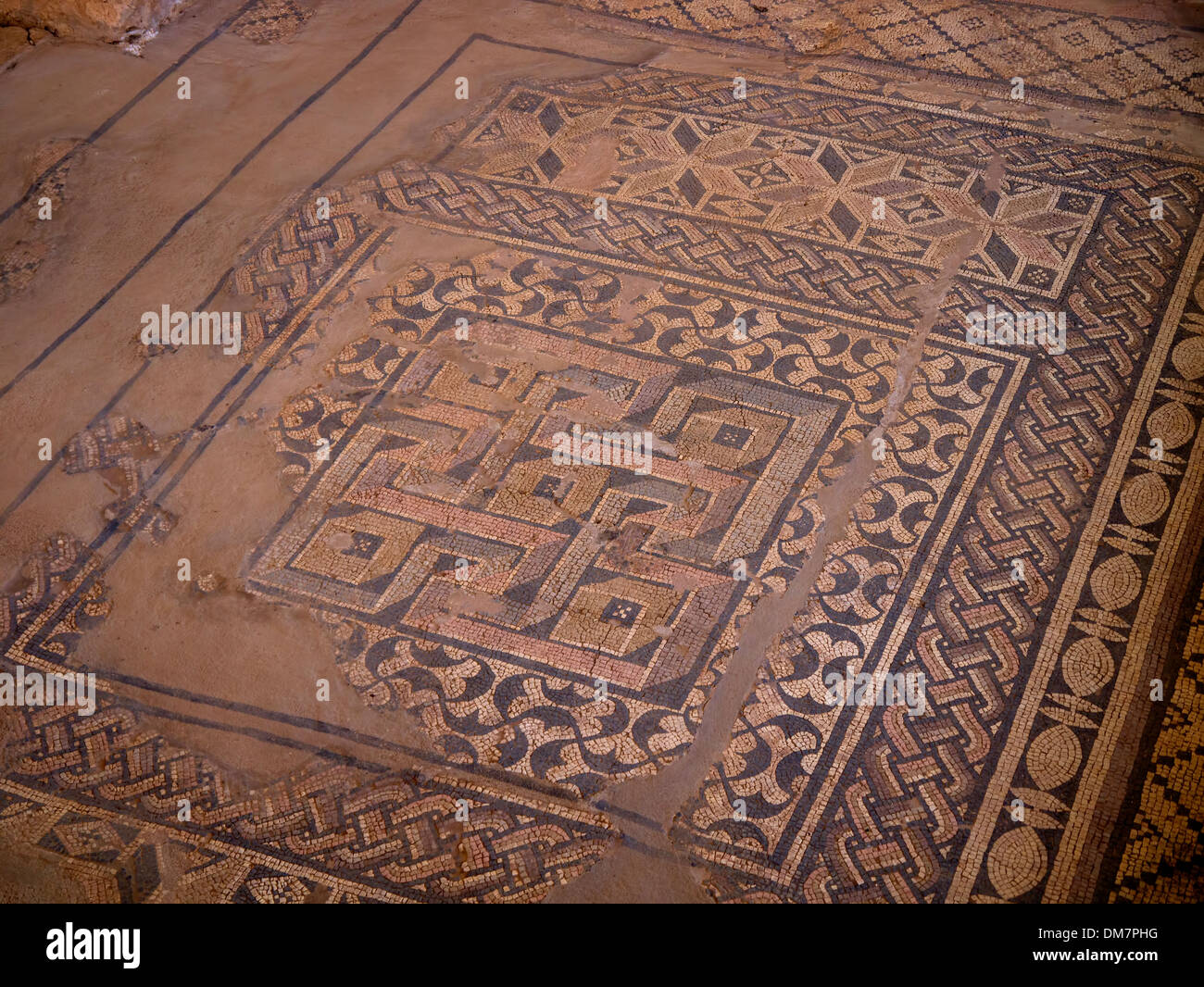Interesting mosaic floors in the Roman Villa in Skala Kefalonia Greece

Image details
Contributor:
Gillian Singleton / Alamy Stock PhotoImage ID:
DM7PHGFile size:
45.3 MB (3 MB Compressed download)Releases:
Model - no | Property - noDo I need a release?Dimensions:
4592 x 3448 px | 38.9 x 29.2 cm | 15.3 x 11.5 inches | 300dpiDate taken:
September 2013Location:
Skalla Kefalonia GreeceMore information:
The Roman Villa in Skala, Kefalonia: At the edge of Skala village, there are the remains of a Roman villa. According to the evidences, this villa was constructed in the 3rd century AD and belonged to a wealthy Roman. On the floor it has interesting mosaics. One of these mosaics depicts an altar with a sacrificial bull, while a man is about to kill him. Another mosaic shows the god Envy attacked and eaten by four wild animals: lion, tiger, panther and leopard. In the early Christian times, a church was constructed over part of the villa. This ancient site is small and a short walkway has been constructed along it for visitors. The villa was discovered by accident in 1944 by the owner of the land. Excavations started in 1957. The ruins of the Roman villa were accidentally discovered in 1944 by the owner of the land in which they were found. Excavations started in 1957. The villa belonged to a wealthy Roman in the 3rd century AD. One of the mosaic floors depicts an altar with a sacrificial bull, a ram and a boar and a man about to kill the bull. Another mosaic shows Fthonos or 'Envy' being attacked and eaten by four wild animals - a lion, a tiger, a panther and a leopard. Later, a church was built over part of the villa. What is left of the mosaic floors are today protected by glass and a walkway has been constructed around the viewing panels.